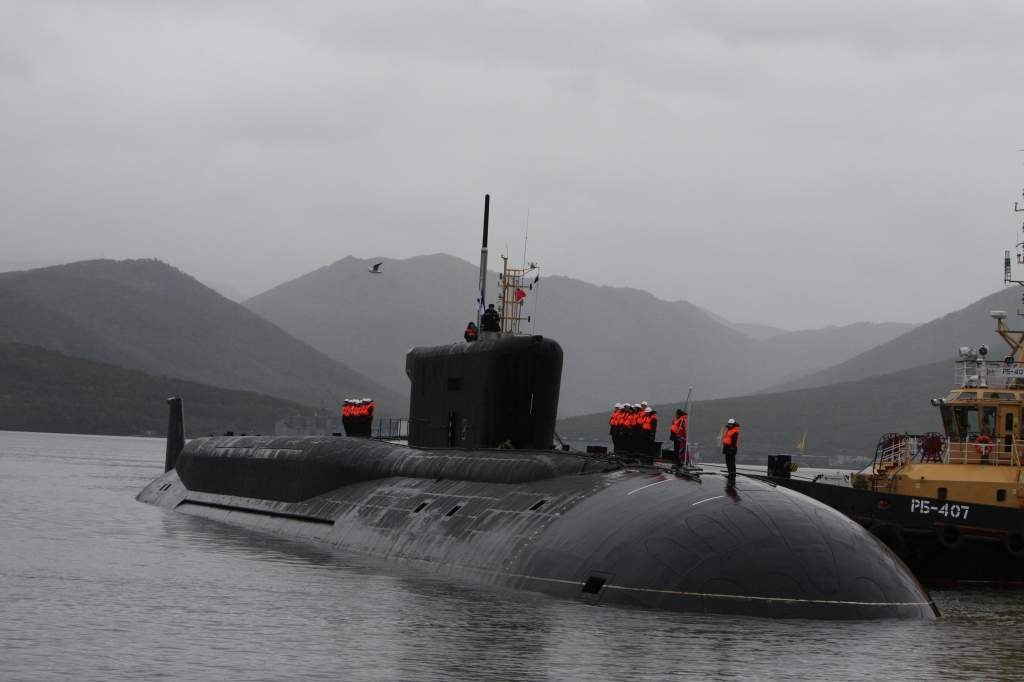

A state-of-the-art sonar system to protect Russia’s territorial waters in the Arctic is already under development, the newspaper Izvestia quoted a Russian Defense Ministry source familiar with the situation as saying. The system will be equipped with sophisticated sonar buoys and underwater sensors that will track the acoustic signals of underwater and surface objects and transmit the information to a ground control center via satellites.
The source said that “the project is due to be finalized in 2017 and after it is approved by the Russian Defense Ministry, the new sonar system will enter service.” According to the source, the fully deployed system can cover an area spanning hundreds of square kilometers.
The Russian air defense manufacturer Almaz Antey was tasked with developing the project. The company cooperates with a whole array of enterprises within the Russian military-industrial complex.

Historian Dmitry Boltenkov told Izvestia that the new sonar system will most likely be deployed in the Arctic. He referred to the Cold War era, when American and British nuclear submarines were repeatedly tracked in the Arctic Ocean. In particular, they were detected in the seas bordering Russia’s northern coast, he said.
“But currently, they are actively trying to track the ships and submarines of the Russian Northern Fleet, especially now that the Russian navy has the most advanced Yasen- and Borei-class nuclear powered submarines,” he said.

Boltenkov also drew attention to the fact that US submarines can carry Tomahawks: long-range, all-weather, subsonic cruise missiles capable of hitting targets at a distance of more than 1,500 kilometers.
In August 2014, a high-ranking source within the Russian Navy’s headquarters said that a US Virginia-class submarine was detected and “forced out” by Russian anti-sub forces after it violated the country’s boundary waters in the Arctic.In the mid-1960s, the US Navy started to deploy a global underwater sonar system, SOSUS (Sound Surveillance System), which was mainly designed to monitor Soviet submarines. SOSUS is still operational.
Installed at a depth of several dozen meters, the system’s sensors form several chains along the Greenland-Iceland-United Kingdom line, with separate sensors currently in place in the Pacific Ocean.

Gordon Duff posted articles on VT from 2008 to 2022. He is a Marine combat veteran of the Vietnam War. A disabled veteran, he worked on veterans and POW issues for decades.
Gordon is an accredited diplomat and is generally accepted as one of the top global intelligence specialists. He manages the world’s largest private intelligence organization and regularly consults with governments challenged by security issues.
Duff has traveled extensively, is published around the world, and is a regular guest on TV and radio in more than “several” countries. He is also a trained chef, wine enthusiast, avid motorcyclist, and gunsmith specializing in historical weapons and restoration. Business experience and interests are in energy and defense technology.
ATTENTION READERS
We See The World From All Sides and Want YOU To Be Fully InformedIn fact, intentional disinformation is a disgraceful scourge in media today. So to assuage any possible errant incorrect information posted herein, we strongly encourage you to seek corroboration from other non-VT sources before forming an educated opinion.
About VT - Policies & Disclosures - Comment Policy





Comments are closed.